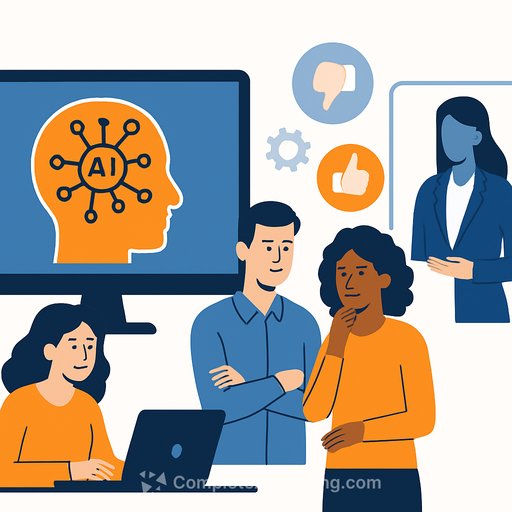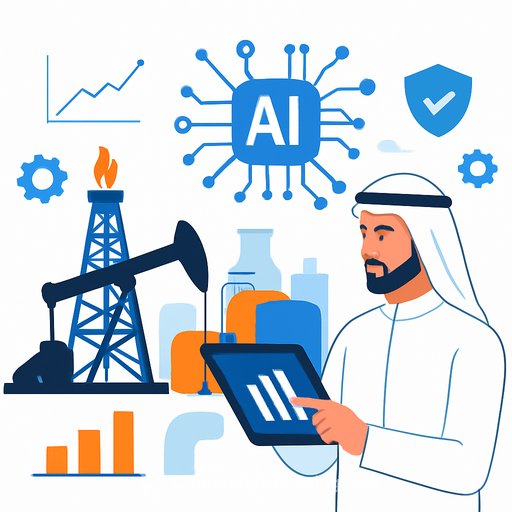How employees view AI management tools - and what managers should do next
AI can speed up reviews, training, and onboarding. But employees are still cautious - especially about fairness and final decisions.
In a new Software Finder survey of 1,006 employees, 21% say an AI tool has evaluated their performance. Yet 23% felt misjudged by an AI system, and 66% trust AI tools less than human-led performance management. Only 12% trust them more; 22% see them about the same.
There's optimism, though: 59% feel positive about AI's growing role at work. Still, only one-in-three believe AI improves their ability to succeed; 24% think it threatens it, and 18% think it does both. Eighty-five percent want a human manager or HR to make the final call in hiring.
Generational signal, not a green light
Gen Z is the most open to AI judging performance (14% trust it more than managers). But they're also the least comfortable being hired or fired by AI (9%). Millennials are the most comfortable with AI in those decisions - and it's still just 11%.
What employees think is most accurate
Seven-in-10 say human feedback best reflects their value. About one-in-four prefer a mix of AI assessment plus human input. Millennials are the most supportive of that hybrid approach (about 28%).
Learning and onboarding: use AI, but don't make it cold
Twenty-six percent say AI makes learning at work easier; 42% say it makes learning feel impersonal; 32% say both. Gen X is most likely to say AI helps (28%) and least likely to say it makes learning feel robotic (38%).
- 46% have used an AI training or learning tool.
- 55% prefer hybrid learning - AI plus human support.
- AI-enabled onboarding can backfire: 46% felt less connected to the company; 43% felt no difference.
Manager playbook: deploy AI without losing trust
1) Keep AI in an assistant role for performance
- Use AI to summarize goals, trends, and examples - not to assign final ratings.
- Require human calibration and a documented rationale for every rating and pay decision.
- Offer an appeal process when AI-informed data influences outcomes.
- Ban AI-only "productivity surveillance" scores from compensation and promotion decisions.
2) Hiring and promotions: human makes the final call
- Make it policy: 85% of employees want a human or HR to decide. Do not delegate final decisions to AI.
- Audit tools for job relevance and adverse impact. Re-test after model or job changes.
- Tell candidates and employees when AI is used, how it's used, and what data it uses.
- Provide a non-AI alternative or accommodations where needed.
Helpful references: EEOC guidance on AI and employment, NIST AI Risk Management Framework.
3) Learning and onboarding: go hybrid by default
- Pair AI modules with live coaching, manager check-ins, and peer cohorts.
- Use AI for personalization and spaced practice; use humans for context, judgment, and culture.
- In onboarding, add mentors, scheduled 1:1s, and "day 7/30" pulse checks to offset the 46% connection drop.
- Track completion, application on the job, and manager-observed behavior change - not just quiz scores.
4) Transparency isn't optional
Trust erodes when people feel kept in the dark: 23% say their company isn't transparent about AI at work, and 34% aren't sure.
- Publish an AI-at-work notice: tools in use, purposes, data sources, safeguards, and human oversight.
- Provide a feedback and appeal channel for AI-assisted decisions.
- Maintain an AI tool register with owners, risks, mitigations, and review dates.
5) Measure what matters
- Performance: fairness gaps by team/role, calibration variance, appeal rates and outcomes.
- Hiring: selection rate differences, time-to-fill, quality-of-hire, candidate satisfaction.
- Learning: adoption, skill gains, manager ratings of on-the-job use, retention during and after onboarding.
- Trust: quarterly pulse on perceived fairness, clarity, and confidence in AI-assisted processes.
30-60-90 day rollout (practical)
- Days 1-30: Inventory AI in use; pause high-risk use cases (firing, discipline, promotions). Draft an AI policy with human-in-the-loop requirements.
- Days 31-60: Pilot hybrid training and AI-assisted reviews with two teams. Run bias and impact tests. Set up an appeal path and publish your AI notice.
- Days 61-90: Expand based on results. Add dashboards for fairness and trust metrics. Schedule quarterly audits.
Bottom line for managers
Employees are open to AI - as long as humans stay accountable, decisions are explainable, and the process feels fair. Use AI to reduce grunt work and improve consistency. Keep judgment, context, and final decisions with managers.
Skill up your team
If you're setting standards or training managers on AI-assisted performance, hiring, or L&D, explore curated options here: AI courses by job role.
Your membership also unlocks:






